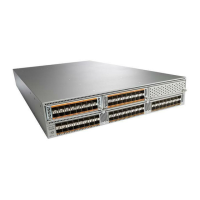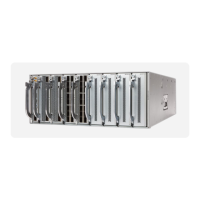PurposeCommand
Executes the default action for the policy that you are
overriding. The action label is in the format
number1.number2.
number can be any number up to 16 digits. The range
for number2 is from 0 to 9.
action number[.number2] policy-default
Example:
switch(config-applet)# action 1.0 policy-default
Forces one or more modules or the entire system to
reload.
number can be any number up to 16 digits. The range
for number2 is from 0 to 9.
action number[.number2] reload [module slot [-
slot]]
Example:
switch(config-applet)# action 1.0 reload module 3-5
Sends an SNMP trap with the configured data. number
can be any number up to 16 digits. The range for
number2 is from 0 to 9.
The data arguments can by any number up to 80
digits. The string can be any alphanumeric string up
to 80 characters.
Enclose the string in quotation marks.
action number[.number2] snmp-trap {[intdata1
data [intdata2 data] [strdata string]}
Example:
switch(config-applet)# action 1.0 snmp-trap strdata
“temperature problem”
Sends a customized syslog message at the configured
priority. number can be any number up to 16 digits.
The range for number2 is from 0 to 9.
The error-message can be any quoted alphanumeric
string up to 80 characters.
action number[.number2] syslog [priority prio-val]
msg error-message
Example:
switch(config-applet)# action 1.0 syslog priority
notifications msg “cpu high”
If you want to allow the triggered event to process any default actions, you must configure the EEM policy
to allow the default action. For example, if you match a CLI command in a match statement, you must
add the event-default action statement to the EEM policy or EEM does not allow the CLI command to
execute. You can use the terminal event-manager bypass command to allow all EEM policies with CLI
matches to execute the CLI command.
Note
Defining a Policy Using a VSH Script
You can define a policy using a VSH script.
Before You Begin
Make sure that you are in the correct VDC. To change the VDC, use the switchto vdc command.
Ensure that you are logged in with administrator privileges.
Ensure that your script name is the same name as the script filename.
Cisco Nexus 5600 Series NX-OS System Management Configuration Guide, Release 7.x
OL-31641-01 245
Configuring EEM
Defining a Policy Using a VSH Script

